#dvapara
Photo
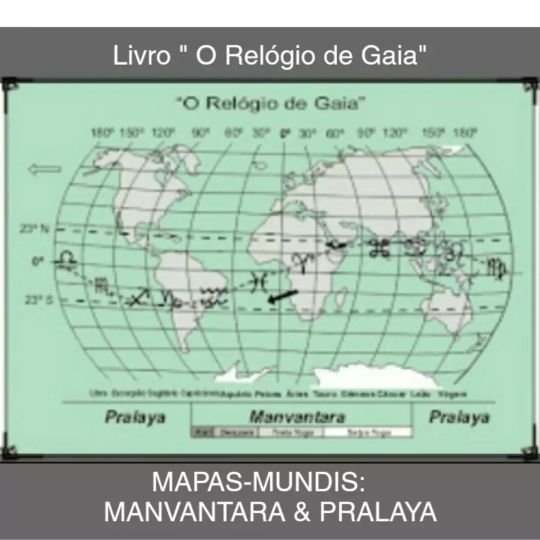
#relogiodegaia #gaia #mapamundi #cartografia #india #oriente #ori #oriya #shesha #manvatara #agartha #agharta #shambala #balarama #krishna #zodiacal #zodiac #kaliyuga #bhagavatatungi #dvapara #tretayuga #satyayuga #shreembrzee #lakshmana ★Domingo,19 de junho★ ★★Boa noite🙏★★ MAPAS MUNDIS : - ORÁCULO DE GAIA - MANVANTARA & PRALAYA (Cultura da India do Oriente) Pralaya - Manvantara -Kali Yuga -Dwapara (Dvapara) -Treta Yuga -Satya Yuga Cartografia do MAPA MUNDI da transformação, no blogger Editorial Agartha. 🗺 mapa mundi Linha Eclíptica Zodiacal Libra♎ (Balança/Equilíbrio) Escorpio♏ Sagitário♐ Capricórnio♑ Aquário ♒ 🌎Brasil(Sul) Peixes♓ Áries♈ Touro♉ Gêmeos♊ Câncer♋ Leão♌ Virgem♍ ******** https://en.wikipedia.org/wiki/Shesha A forma Narayana de Vishnu é frequentemente descrita como repousando em Shesha. Adishesha é considerado como um dos dois montes de Vishnu ao lado de Garuda . Diz-se que ele desceu à Terra 🌍nas seguintes formas ou encarnações humanas: " Lakshmana " , irmão da encarnação de "Vishnu Rama" durante ↪ o Treta Yuga , ↩ e de acordo com algumas tradições, (Avatar)(Avatares) ↪ como Balarama ,↩ irmão da encarnação de Vishnu ↪Krishna ↩durante o ↪ Dvapara Yuga .↩ De acordo com o Mahabharata (Adi Parva), seu pai era Kashyapa e sua mãe Kadru, embora em outras contas, ele é geralmente um ser primordial criado por Vishnu.(Espiral)O termo "shesha" em textos sânscritos, especialmente aqueles relacionados ao cálculo matemático, significa "resto" - o que permanece quando tudo o mais deixa de existir. *Oriya Bhagavat * https://or.m.wikipedia.org/wiki/%E0%AC%93%E0%AC%A1%E0%AC%BC%E0%AC%BF%E0%AC%86_%E0%AC%AD%E0%AC%BE%E0%AC%97%E0%AC%AC%E0%AC%A4 Oriya Bhagavat Jagannath Das é um antigo mito literário da língua Oriya . Foi escrito no século XVII. O Bhagavad - gita é escrito em folhas de palmeira. 🌿🍃Esses livros foram posteriormente coletados e publicados em forma impressa. Em Odisha, Bhagwat Tungi e Bhagwat Gadi / Bhagwat Gosai eram tradicionalmente usados para aulas coletivas de Bhagavata. Bhagavata também é recitado para Jagannath . *↪No passado, o Bhagavad-gita era chamado de Bhagavata Tungi.↩ * Mais tarde, devido ao declínio no número... https://www.instagram.com/p/CfALtQopE9pVk44W8b8FVvJMSBoS0IMiOqLkJs0/?igshid=NGJjMDIxMWI=
#relogiodegaia#gaia#mapamundi#cartografia#india#oriente#ori#oriya#shesha#manvatara#agartha#agharta#shambala#balarama#krishna#zodiacal#zodiac#kaliyuga#bhagavatatungi#dvapara#tretayuga#satyayuga#shreembrzee#lakshmana
1 note
·
View note
Note
do you think arjuna would hear that karna doesnt care for gilgamesh much and would be like 'to be someone that has drawn the attention of my sworn enemy.... i wonder what kind of man he could be' and then he meets gilgamesh for himself and is like 'oh what the fuck this guys a freak'
honestly i think you're slightly off re karna and gilgamesh theyre like. weird about each other like yeah karna says he doesnt care for him but they do have some thematic foil stuff going on and also are addicted to being tacky and golden (also arjuna doesnt necessarily only check people out just bc karna interacted with them, if anything its more likely karna follows him around for some reason)
but if arjuna and gilgamesh interact i think its one of those things where arjuna is like, trying to be polite via social standards and gilgamesh is being gilgamesh so theres tension bc gilgamesh thinks arjuna is being insincere and arjuna thinks gilgamesh is being a bitch. its kind of weird bc arjuna actually has a lot of vaguely similar thematic stuff (albeit only on the surface level) in being royalty and a demigod and having a very close relationship with a friend he was heavily associated with who died before him marking the end of a time period in his region etc, but hes also like, way more passive and stuff so i think he sees gilgamesh and is like 'wow. this guy is a lot. i will just try to keep interactions to a minimum.'
honestly i kind of hope we get some interactions between them in turas realta bc i think it could be interesting
#im just saying i think. that. theres at least a couple of vague parallels w like gil and enkidu and mesopotamian end of gods#and juna and krishn and the end of the dvapara yuga#which fate has literally never tried to work with but they could if they tried#my asks
8 notes
·
View notes
Photo

Les edats del món segons la cosmologia hinduista.
#cronologia#edats del món#Satya Yuga#Treta Yuga#Dvapara Yuga#Kali Yuga#Edat Daurada#Edat Argentada#Edat Bronzina#Edat Ferrenya#cliodinàmica
5 notes
·
View notes
Text
Planetary Yugas and Their Significance

The universe operates on a grand cosmic clock, where time is not just a linear progression, but a cyclic phenomenon. In Hindu cosmology, this concept is beautifully encapsulated in the idea of Yogas, which are epochs or eras that mark the cyclical evolution of human consciousness. These Yugas – Satya Yuga, Treta Yuga, Dvapara Yuga, and Kali Yuga – are not only a testament to the intricate nature of time but also hold profound astrological insights into the human journey.
learn more about Planetary Yugas. Get an online astrology consultation by the world-renowned astrologer Mr. Alok Khandelwal.
Satya Yuga: The Age of Truth and Purity
Satya Yuga, also known as the Golden Age, is the first and highest Yuga in the cycle. It represents a period of truth, righteousness, and spiritual enlightenment. From an astrological perspective, individuals born during Satya Yuga are believed to possess an inherent connection with the divine and often exhibit qualities of wisdom, compassion, and ethical strength. Planets align harmoniously, fostering a balanced and harmonious life.
Treta Yuga: The Age of Rituals and Sacrifice
Treta Yuga follows Satya Yuga and is characterized by a decline in truth and purity. However, it is still considered an era of virtue and dharma. Astrologically, those born in Treta Yuga may find themselves drawn to rituals, ceremonies, and acts of devotion. There is a heightened influence of planetary energies, making individuals more attuned to cosmic forces and spiritual practices.
Dvapara Yuga: The Age of Diminishing Righteousness
As we move further into the cycle, Dvapara Yuga marks a significant decrease in righteousness and spirituality. Yet, it remains an age where divine knowledge is preserved through scriptures and teachings. Astrologically, individuals born during Dvapara Yuga may have a profound interest in astrology, ancient wisdom, and metaphysical subjects. Planetary positions start to create more complex life scenarios, testing one’s spiritual resolve.
Kali Yuga: The Era of Obscurity and Materialistic Pursuits
Kali Yuga, the final and current age in the Yuga cycle, is marked by spiritual ignorance, materialism, and moral decay. Astrologically, this age presents the most challenging conditions, with planetary configurations often causing inner conflicts and external trials. However, it’s also an era where spiritual growth can be accelerated through the recognition of life’s transient nature and the quest for deeper meaning.
Read Also:- How Transits and Timing Effects our Life
Astrological Implications of Yugas
Understanding the Yugas provides astrologers with a unique perspective on a person’s life path. It’s believed that the Yuga in which an individual is born can significantly influence their karmic journey and spiritual evolution. While the Yugas indicate broader cosmic trends, individual birth charts still play a vital role in shaping one’s destiny.
For example, a person born in Kali Yuga might face more profound challenges on the spiritual path due to the prevalent materialism and distractions of this age. However, their birth chart could reveal specific planetary alignments that either exacerbate these challenges or provide opportunities for spiritual growth.
Navigating Your Yuga and Birth Chart
As we navigate the currents of time and Yugas, it’s important to remember that astrology is a tool for self-awareness and personal growth. While the Yugas offer a grand cosmic framework, the intricacies of your life are uniquely detailed in your birth chart.
Consulting with an experienced astrologer can provide profound insights into your journey. They can help you understand the karmic patterns, planetary influences, and life lessons that are most relevant to you. By aligning your actions with the cosmic flow and using astrology as a guide, you can navigate the Yugas and embark on a transformative journey toward self-realization.
In conclusion, the concept of Yugas in Hindu cosmology not only illustrates the cyclical nature of time but also offers valuable astrological insights into the human experience. Whether you resonate with the wisdom of Satya Yuga or grapple with the challenges of Kali Yoga, astrology serves as a guiding light, helping you make the most of your journey through the ages.
Read Also:- Rakshabandhan and Vedic Astrology
#astrology#vedic astrology consultation#astrology services#asttrolok#online astrology prediction#Birth Chart#yugas#palnetary yoga#4 yuga#Kali Yuga#Dvapara Yuga#Treta Yuga#Satya Yuga
1 note
·
View note
Text
I wasn't there to witness the glory of Treta Yuga ,
I wasn't there to witness the epic of Dvapara Yuga
But I'm fortunate enough to witness this day.
JAI JAI SHREE RAM 🚩 श्री राम 🚩
#jai shree ram#ram mandir#ram#india#indian tumblr#desi academia#desiblr#desi tumblr#txt post#txt#desi culture#writers on tumblr
206 notes
·
View notes
Text

I am making a 5e setting inspired by Ancient India!
Welcome to the world of Devabhumi, which is is a high fantasy 5e setting inspired by the history and epics of Ancient India. This setting features:
- 100+ pages of lore
- A karma mechanic
- 6 new races
- 20+ backgrounds and feats
- And much more!
The Land of Devabhumi is a distant place nestled in between the sea and sky scraping mountains. It is a land where gods and mortals live together, boons and curses change the destiny of its inhabitants, and senses are easily overpowered by the diversity of the landscape.
The events of Devabhumi take place in the Dvapara Yuga (the Bronze Age), which features various technological advancements such as flying ships, magical chariots, and powerful weapons.
The Kickstarter will go live in one month. Sign up to be notified when it launches here.
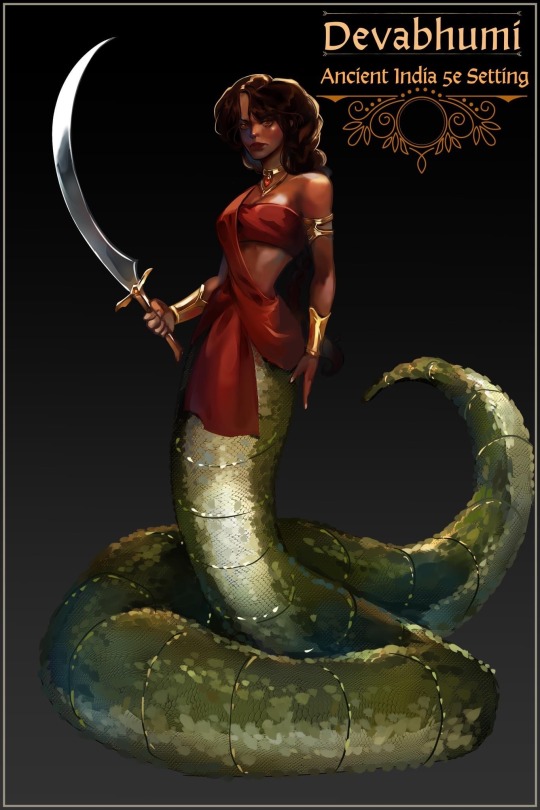
#dnd#d&d#dnd Art#dnd homebrew#dungeon master#5e#dungeons and dragons 5e#pathfinder#tabletop#ttrpg#dndart#dnd character#dndstuff#dnd oc
35 notes
·
View notes
Text
Paradox of the Thirteenth, or "There's a surprising amount of Faction Paradox in Series 11-13"

Despite not being many fan's top choice, the Thirteenth Doctor's era shared concepts with the Faction Paradox series surprisingly often. Some of these were explicit, such as The Paradox Moon featuring Siblings Same and Different (although these Siblings' Faction is otherwise unrelated to the FP Faction, as of 2023), whilst others are simply similarities in creative choices, again varying in how obvious they are, from the "Ashad" (Series 12 - The Timeless Children) resembling FP's technosapiens, to Time Lords "binding" time in Once, Upon Time (part of Series 13/Flux)
So, here I will attempt to list every possible connection between the Thirteenth Doctor/Chris Chibnal's era of Doctor Who and the Faction Paradox mythology
Firstly, an explanation as to why this is all happening...

Explanation as to why the Thirteen Doctor is meeting Faction Paradox-esque entities.
The War has been ended for a long time, and the Great Houses have finally, actually, fallen (see The Timeless Children) leaving no one to hold up their imposed metastructure of history. Why didn't anyone invade in Series 1-7, before the Time Lords returned?, you ask. Well, it's not because The Day of the Doctor is a bootstrap, as I don't believe in perfect bootstraps, but rather because well... They did. During Series 1, the Reapers arrived, explicitly due to the lack of Time Lords (Father's Day), and so did a lone Dalek (Dalek), and finally the original Dalek Emperor's last Time War fleet (The Parting of the Ways). Then in Series 2, the Cult of Skaro arrived (Army of Ghosts/Doomsday), followed by Davros (The Stolen Earth/Journey's End)- who along with the Supreme Dalek, somehow survived the Crucible's fall (The Magician's Apprentice/The Witch's Familiar)- and then the New Dalek Paradigm emerged, from survivors of the War (Victory of the Daleks). All this interference from War-time participants is what's preventing pre-Anchoring entities entering the Third Universe, as it echoes the status quo which was so hostile to their very existence.
Oh, and "Dvapara Yuga" means "the Dark Times, as understood to not be an early period of universal history, but rather the state of history metatemporally predating Rassilon's anchoring of the thread"

She is born out of an interaction with a past Doctor (Twice Upon a Time) - if it wasn't for acausal (and unintentionally) intervention of the First Doctor, the Thirteenth Doctor never would have existed. This is a bit of a stretch, as interference forwards in a timeline is much less paradoxical than the reverse, but this is her first appearance so...

The Solitract, from It Takes You Away, is an intelligent & conscious universe, exiled from the main universe in order to allow for it's creation. "Creation" here probably refers to Event One/The Big Bang, but, if one is on the train of "the universe before the Anchoring of the Thread didn't have a beginning, and the Big Bang was retroactively added by Urizen [Rassilon]", then this is very easily re-interpreted as a mention of the early Sun Builders (a.k.a Time Lords) cleaning up their area of spacetime in preparation for imposing rationality on it. To be even more bold, I may suggest that this isn't a universe at all, but instead an intercreational, a class of being first mentioned in The Book of the War, although one type was first mentioned in the BBC Eighth Doctor Adventures novel The Taking of Planet 5, as a "Swimmer". I propose that the Solitract is not a Swimmer, or a Leviathan, but rather a smaller intercreational, perhaps growing out of the Third Universe (the main DW/FP universe), before being banished by the Great Houses. See Explanation as to why the Thirteen Doctor is meeting Faction Paradox-esque entities at the top of this post.
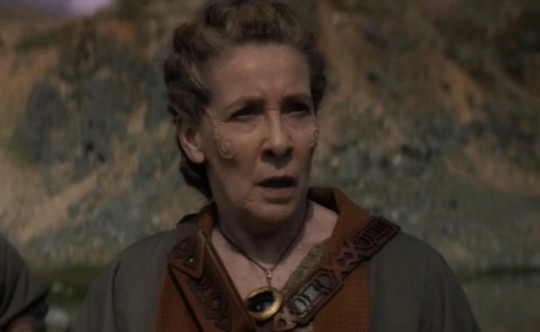
The Ux, from The Battle of Ranskoor Av Kolos, are clearly some gods from the Dvapara Yuga.

Orphan 55 features a future version of Earth which deviates heavily from most other depictions of it. Speculatively, this means the Thirteenth Doctor travelled to an aberrant timeline, or that the Ghost Point has somehow worsened since the degradation of the Great Houses's imposed metastructure, rather than healing.

During Fugitive of the Judoon, the Doctor interacts with Gallifrey's distant past. I can't really explain this even by the standard explanation at the top of this post. However, one thing interesting to note is that the ancient Time Lord "Gat" considered "Mutter's Spiral" to be a "tiny galaxy". This is notable because Gallifrey is basically always said to be in the centre of Mutter's Spiral - that is, the Milky Way - and naming a galaxy as "tiny" kind of implies that you aren't from it. Maybe Gallifrey wasn't always in Mutter's Spiral, and got moved? Or maybe Gat and the Division come from some alternative Gallifrey? I don't know, just interesting to note.

The novel At Childhood's End (written by Sophie Aldred, actor for Ace) featured Ace meeting the Thirteenth Doctor, and descriptions of the former's fractured timelines. Notably, the next time Ace and the Doctor met (in The Power of the Doctor), neither one of them mentioned this, almost as if the timeline in which it happened had fractured...

Rakaya and Zellin from Can You Hear Me? are clearly some kind of pre-anchoring gods like the Ux. In Time Lord Victorious short story The Guide to the Dark Times, it was confirmed that they were, specifically, Eternals (not the MCU kind), and another Time Lord Victorious text, a novel called The Knight, the Fool, and the Dead, claimed that Eternals were among the other inhabitants of the Dark Times, the "Old Ones". Interestingly, multiple Eternals do indeed appear in the "classic" series of Doctor Who, implying that the Anchoring did not fully remove them, but as they didn't appear in NuWho until now, I feel safe in speculating that the War somehow barred them from it - perhaps they'd joined the conflict, on the side of both the Time Lords, Daleks, the Enemy, and others, "helping out" wherever it benefited them?

Ashad, first appearing in The Haunting of Villo Diodati, and then in the following serial Ascension of the Cybermen/The Timeless Children, is an "emotional Cyberman". Any readers of Faction Paradox could immediately draw the connection between this and Faction Paradox's "technosapiens", named as such partially to avoid infringing on the BBC's trademark, but also because The Book of the War showed that many sects of posthumanity had become cyborgs, but many were not emotionless and evil like the Cybermen.

The Timeless Child, first appearing in The Timeless Children, is vaguely reminiscent of the idea hinted upon in The Book of the War that the Great Houses stole the power of regeneration from another species, in The Book of the War being the Great Vampires, and in The Timeless Children being the titular Timeless Child. This note of continuity was expanded upon by the writer @aristidetwain in his short story Out of the Box introduced the "Child-That-Was-Taken", intended to be a member of the Yssgaroth species, and to be the Timeless Child itself. Additionally, this Child was the motivator for the Great Vampires' war with the Great Houses, the Eternal War (a.k.a First War in Heaven).
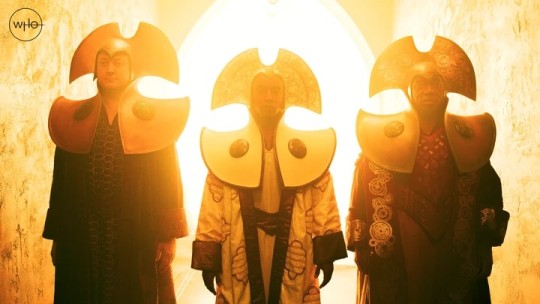
In The Timeless Children, Tecteun is shown alongside Rassilon and Omega. Previously, the figure alongside Rassilon and Omega was the Other, a version of the Doctor from before he was the Doctor. My personal fix for this, which I admittedly took from @/aristidetwain, is that there were many Others, assisting Rassilon and Omega at different points in time. Other Others may be the human Dr. Who from the novel Human Nature, the Eleventh Doctor "Cheesemaker" (The Lost Dimension), Osiris (in his car future), and the Sixth Doctor (The Scrolls of Rassilon)
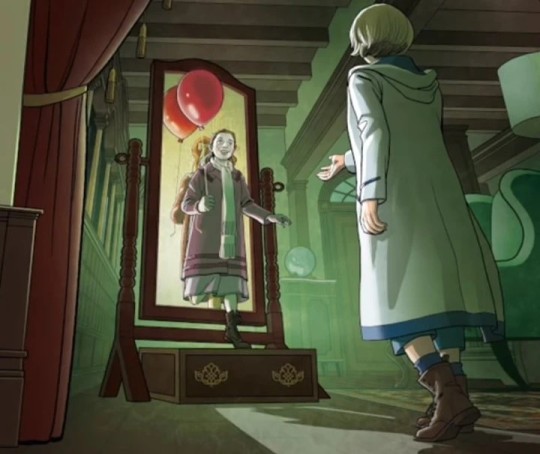
In Shadow in the Mirror, the Thirteenth Doctor released Aphasia / Daughter of Mine from her mirror of entrapment, despite the fact that Aphasia mentioned a "ginger haired doctor" who "believed himself to be the last" (likely Muldwych/Merlin), meaning that the Doctor had been interacting with Aphasia out-of-order, which is... Reasonably dangerous.

Throughout Flux, the villains "Swarm" and "Azure" attempt to remove the Mouri from the planet Time, effectively de-anchoring the thread. They're method, strangely, is to try to destroy the entire universe using "the flux".
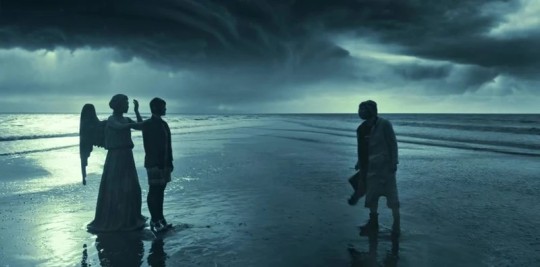
Village of the Angels features the first instance of Weeping Angels being shown to posses proper intelligence, as they ally themselves with Tecteun, presumably in exchange for something, and even more interestingly, they have a rogue member, suggesting power structures in their ranks. This isn't particularly Faction Paradox -related, but it feels like it is, and I hope Faction Paradox writers use Weeping Angel - analogues to continue to explore this.

Eve of the Daleks features the Doctor "resetting" the TARDIS, causing a localised time loop. However, perhaps more notably, the Daleks which appear in this episode are "Dalek Executioners", which make their debut in Time Lord Victorious.
The Power of the Doctor won't be mentioned here, perhaps I'll grant it a full post going over all of its batshit-insanity (affectionate?) some other time.
This post was made after I saw @familyparadox remark at the high amount of Faction/Thirteen content
#faction paradox#doctor who#dweu#thirteenth doctor#jodie whittaker#chris chibnall#ashad the lone cyberman#eternals#long post
59 notes
·
View notes
Text

The twelve Sun-gods (12 Adityas) and their associates
The twelve Adityas are nothing but different forms of the Sun-God Surya. In different Puranas their names are given differently. Brahma once recounted to the sages the one hundred and eight sacred names of Surya. The Brahma Purana lists these names and we reproduce them in nine groups of twelve names each.
(1) Surya, Archana, Bhagavana, Tvashta, Pusha, Arka, Savita, Ravi, Gabhastimana, Aja, Kala, Mrityu.
(2) Dhata, Prabhakara, Prithivi, Jala, Teja, Akasha, Vayu, Parayana, Soma, Brihaspati, Shukra, Budha.
(3) Angaraka, Indra, Vivasvana, Diptamshu, Shuchi, Shouri,Shanaishvara, Brahma, Vishu, Rudra, Skanda, Vaishravana.
(4) Yama, Vaidyuta, Jathara, Agni, Aindhana, Tejohapti, Dharmadhvaja, Vedakarta, Vedanga, Vedavahana, Krita, Treta.
(5) Dvapara, Kali, Sarvasurashraya, Kala, Kashtha, Muhurta, Kshapa, Yama, Kshana, Samvatsara, Ashvattha, Kalachakra.
(6) Vibhavasu, Shashvata, Purusha, Yogi, Vyaktavyakta, Sanatana, Kaladhyaksha, Prajadhyaksha, Vishvakarma, Tamonuda, Varuna, Sagara.
(7) Amsha, Jimuta, Jivana, Ariha, Bhutashraya, Bhutapati, Sarvalokanamaskrita, Shrashta, Samvartaka, Vahni, Sarvadi, Alolupa.
( 8 ) Anata, Kapila, Bhanu, Kamada, Sarvotamukha, Jaya, Vishala, Varada, Sarvabhutasevita, Mana, Suparna, Bhutadi.
(9) Shighraga, Pranadharana, Dhanvantari, Dhumaketu, Adideva, Aditinandana, Dvadashatma, Ravi, Daksha, Pita, Mata, Pitamaha.
"All these personalities are the opulent expansions of the Supreme Personality of Godhead, Visnu, in the form of the sun-god. These deities take away all the sinful reactions of those who remember them each day at dawn and sunset." (Srimad Bhagavatam 12.11.45)
"Aditya"
Talon Abraxas
36 notes
·
View notes
Text
Etymology of the Three Treasures

Or: Why were these magic weapons kept in a Buddhist temple named after eras of Hindu cosmology? Well, at least they are in the English localization of Soulcalibur, and consequently, the rest of the series. Bear with me as I overthink some plot devices in a fighting game! First, I’ll give a refresher on which one is what. In clockwise order from the above image from Soul Calibur VI:
The sword: Krita-Yuga is actually the titular Soul Calibur, the antithesis of the evil sword Soul Edge.
The mirror: Dvapara-Yuga has the power to purify anything corrupted by evil energies.
The rod: Kali-Yuga can absorb any type of energy, be it good or evil.
Note the hyphenation.
These are named after three of the four eras (yugas) of the Yuga cycle. The broad strokes of each one in chronological order, and in order of diminishing spirituality, are as follows (at least in Vaishnavism, to be clear):
Krita Yuga, “the accomplished age”. A synonym for Satya Yuga, “the age of truth”. This is believed to be when mankind lived in perfect harmony with the Dharma, which is symbolized by a bull on four legs which stand for austerity, cleanliness, mercy, and truthfulness (source: Vedabase). The Golden Age, if you will.
Treta Yuga, “the age of three” is mentioned here for completeness’ sake. The aforementioned attributes (the symbolic legs) began to dwindle by one.
Dvapara Yuga, “the age of two”. This refers to the two remaining pillars of religion: mercy and truthfulness as people continued to stray further from the Dharma.
Kali Yuga, “the age of strife”. Named for the asura Kali, not to be confused with the goddess Kālī. This is believed to be when vice and sin are at their highest, and the Dharma is on its last leg. It is prophesied that Kalki, the final incarnation of Vishnu, will end the era with a fiery sword and usher in a new Satya Yuga, beginning the cycle anew.
As I’ve said, this is the theme the English localization went with. Before I get into the Japanese names, I want to point out that I can see the logic behind it. In story, Kilik wields the Kali-Yuga rod, which absorbed a considerable amount of powerful energy from Soul Edge itself, i.e. the Evil Seed. In that same moment, he himself is also possessed by the Evil Seed, which is only contained by the mirror Dvapara-Yuga. In a sense, the Dvapara-Yuga is the last thing between him and the Kali-Yuga, and by extension, his own destruction. The Krita-Yuga, Soul Calibur itself, is the very weapon built to destroy Soul Edge and bring an end to the chaos wrought by the evil sword. The fact that some of Soul Calibur IV’s endings show it ultimately intends to do this by freezing the world in crystal notwithstanding. On the other hand, I think there’s a reason one of the designers intended to convey “a merciless apathy” with regard to Elysium: eschatological figures with swords mean business. (I’m probably applying that retroactively.)
The other thing is that game canon has it that Soul Calibur tends to appear wherever someone is wreaking havoc with Soul Edge. Suffice it to say that it would pick up different names somewhere along the way. Soul Edge is at some points called “the Sword of Salvation” and the “Hero’s Sword”, but it’s clear that these are products of wishful thinking. That was the theory I was working from in the first place; I still think it holds.
The timeline in New Legends of Project Soul places the following at ~800 A.D.: “An elderly man known only as Edge Master gathers the three powerful artifacts once used by a Briton king. He stores them for safekeeping in Ling-Sheng Su Temple.” This is some 300 years after the same timeline mentions the same weapons went missing. I’d imagine that they had to have ended up in India at some point in the intervening years before Edge Master made it to China. While the same timeline all but outright says that Soul Calibur was Excalibur, where the other two figured in that is anyone’s guess.
So, what are the three treasures’ names in the original Japanese? I’ve belabored my other points long enough, so once again:
The sword: Gouhouken (護法剣), literally, “demon-dispelling sword” or possibly “sword in defense of Buddhist doctrine”.
The mirror: Mappoukyou (末法鏡), literally “mirror of the Latter Day of the Dharma”.
The rod: Meppoukon (滅法棍), literally “extremely [powerful] rod” or possibly “rod of the of the law of destruction”.
It didn’t take me long to understand where the localizer(s) were coming from because this as concise as I can get. That and the latter two are just daring me to mix them up when left as is. Maybe tying them to a theme made the names easier to remember. Only one of these is named after one of the Three Ages of Buddhism, and it’s the one that corresponds to the Kali Yuga! Specifically, Mappou, or Mòfǎ in Chinese, it is the third age which lasts for 10,000 years, during which the Dharma declines; at that age’s end, the Maitreya will restore the Dharma through his teachings. (Pure Land Buddhism holds this era to include the present day. Incidentally, in my research on the Yugas, I found quite a few sites with similar ideas about the Kali Yuga. Boy, does that feel familiar...)
A little tangent about the mirror’s design: note how the metal clasps resemble the ends of a vajra, a legendary weapon significant to both Buddhism and Hinduism. In Sanskrit, vajra means both “diamond” and “lightning bolt”, hence its symbolism of indestructibility and spiritual power. Naturally, it’s a major symbol of Vajrayana Buddhism, wherein the lightning stands for enlightenment. (This likely plays into the Himalayan setting of the Proving Grounds stage.) It’s not for nothing that Kilik’s victory animation in SC6 after a critical finish ends with him in a meditative pose, reciting this mantra: “Om vajra dharma Kilik.” I may as well note that his name comes from the Japanese pronunciation of the Sanskrit hrih, variously translated as “conscientiousness” or “self-respect”, one of the virtuous mental factors in Buddhism. The mantra in the Japanese is “On basara daruma Kiriku”. Here’s the latter in Soulcalibur V. Swap out his name for hrih and you have the heart mantra of the thousand-armed Avalokiteśvara. Or it could be related to the bodhisattva Vajradharma. Maybe both?
While in modern Japanese, meppou (滅法) is often used to mean something absurdly powerful, I ended up scrambling to make sure I wasn’t missing anything because I was somewhat literally reading that as “to destroy dharma”. (In my defense, “dharma” is one way of reading the second character.) I suspect the rod’s name may be an allusion to the concept of zesshoumeppou (是生滅法), the law of creation and destruction; in essence: impermanence.
I don’t have a lot to say about the name Gouhouken; the “demon-dispelling” meaning does suit Soul Calibur.
What’s more, the collective name Three Treasures (Sanbou, 三宝) comes from the practice of taking refuge in Buddhism. Generally, this is expressed by reciting a short formula; the metaphorical treasures are the Buddha, the Dharma, and the Sangha (the monastic community as a whole). This may also be called the Triple Gem or something similar, depending on whom you ask.
And I thought I would just be picking up from where I left off in this short post, but if I’m honest, I just think it’s all really interesting.
Remember that the night the Evil Seed possesses Kilik is the darkest point of his life. He was the one chosen to wield Kali-Yuga, which coincides with some poor mad lad (who just wanted his dad back) picking up the wrong sword in Spain, unleashing a surge of evil magic on the world. The only thing that saved him from being a bloodthirsty monster was his sworn sister Xianglian putting the Dvapara-Yuga on him—at the cost of her own life. Again, without the mirror, Kilik would have been unable to regain his self-control, and the Kali-Yuga would effectively become another Soul Edge. Then he wakes up at Edge Master’s grotto with major survivor’s guilt, and his training begins in earnest.
Kilik’s arc in the new timeline emphasizes his struggle to balance and master his cursed side, culminating in him using it to defeat Inferno (with Xianghua delivering the final blow with Soul Calibur). Although the Dvapara-Yuga shatters in the battle, the main story ends on a hopeful note. He may not be completely rid of Soul Edge’s curse, but he leaves the Astral Chaos with full control of himself and one sacred mirror shard to remember it by. Whether he will try to follow in Edge Master’s footsteps this time remains to be seen.
#soul calibur#soulcalibur#analysis#writing about these games' lore to therion music feels so right#eschatology is always a trip#the one image without subtitles i could find in a pinch and it was in frickin webp; well HA
13 notes
·
View notes
Text

honestly, i feel like they should link yunseongs sword, white storm, to the dvapara yuga somehow. i know that the dvapara yuga is supposed to repulse evil and his sword is meant to reflect your true self but i also dont think that those things have to be mutually exclusive. i think it would be cool if they established that they were forged by the same person or that they were created from the same metal or something, i feel like it would better ground yunseongs sword in the lore we already have, and make it feel less like a random and poorly explained artifact
#soulcalibur#soul calibur#yunseong#like they just tell us its an enchanted sword without explaining anything about its origin#they had three games to tell us about it!!
3 notes
·
View notes
Text
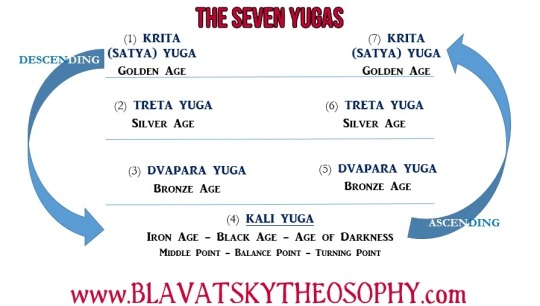
It is quite well known that Hinduism teaches the existence of four Yugas or Ages which together comprise the Maha-Yuga or “Great Age,” which is itself but an extremely minuscule and fleeting part of the entire Maha-Kalpa, the life cycle of the manifested Universe.
The names and durations assigned to the Yugas are as follows:
1st – Satya Yuga (also called Krita Yuga) – Golden Age – 1,728,000 years
2nd – Treta Yuga – Silver Age – 1,296,000 years
3rd – Dvapara Yuga – Bronze Age – 864,000 years
4th – Kali Yuga – Iron Age – 432,000 years
Total: 4,320,000 years (The Maha-Yuga)
According to Hindu tradition, we are currently in the Kali Yuga, which is said to have begun around 5,000 years ago with the death of Krishna, the great divine Teacher and Reformer who is the central figure of the Bhagavad Gita, and for whom there is evidence that he really once lived on Earth.
In the teachings of Theosophy, H. P. Blavatsky informs us in “The Secret Doctrine” that “The year of the Kaliyuga is said to have begun between the 17th and 18th of February in the year 3102 B.C.” (Vol. 2, p. 435) and clarifies that in fact “the instant of the beginning of Kali-Yuga” was “2h. 27m. 30s. a.m. of February 16th” of that year, 5,124 years ago as of 2022 (Vol. 1, p. 662).
It’s easy to work out that the Kali Yuga still has 426,876 years remaining, an almost unimaginably lengthy period of time!
But how literally are we to take these numbers? In his article titled “Cycles,” William Quan Judge shows the hidden numerical code present in the figures of the Yuga chronology.
The Satya Yuga is said to last for 1,728,000 years. Add 1+7+2+8 and the result is 18.
The Treta Yuga is said to last for 1,296,000 years. Add 1+2+9+6 and the result is 18.
The Dvapara Yuga is said to last for 864,000 years. Add 8+6+4 and the result is 18.
The Kali Yuga is said to last for 432,000 years. Add 4+3+2 and the result is 9.
Add 18+18+18+9 and the result is 63. Add those two numbers, 6 and 3, together, and the result is 9. Multiply 6 by 3 and the result is 18. Add that 1 and 8 together and the result is 9. This is undoubtedly of great significance but its real meaning has not been revealed, neither by Mr Judge nor by HPB nor by any of the Masters.
In his important book “The Ocean of Theosophy” (p. 126) Mr Judge writes that, “At the present time we are in a cycle of transition, when, as a transition period should indicate, everything in philosophy, religion and society is changing. In a transition period the full and complete figures and rules respecting cycles are not given out to a generation which elevates money above all thoughts and scoffs at the spiritual view of man and nature.”
Whilst the above figures from the chronologies of exoteric Hinduism are generally used and mentioned in the Theosophical teachings, HPB makes this statement in “The Secret Doctrine” Vol. 2, p. 67:
“Such computations as are given in Manu and the Puranas [Note: These ancient Hindu texts are the main source for the figures of the durations of Yugas, Manvantaras, Pralayas, Kalpas, etc.] – save trifling and most evidently intentional exaggerations – are, as already stated, almost identical with those taught in esoteric philosophy.”
So within those figures there are indeed some “exaggerations,” she says, albeit – for whatever reason – “intentional exaggerations” but on the whole the figures are “almost identical” with those accepted by the Gupta Vidya or Secret Doctrine or Esoteric Philosophy of the Brotherhood of Masters of Wisdom. The fact that they are almost identical and thus not identical is good reason for Theosophists to not focus on or present these numbers as if they are literal, unquestionable, wholly accurate, absolute facts, which has unfortunately been the approach in many cases. But as the true figures or numbers are not given to the public, it appears the exoteric Hindu ones are considered by the Masters to be “close enough” to use, provided that one remembers that they are not the real, literal thing. As will be seen below, HPB says the figures given for the Yugas are only “an approximate duration.”
We also have these words from “The Secret Doctrine”:
“It had been declared from the first and has been repeatedly asserted since that no Theosophist, not even as an accepted chela – let alone lay students – could expect to have the secret teachings explained to him thoroughly and completely, before he had irretrievably pledged himself to the Brotherhood and passed through at least one initiation, because no figures and numbers could be given to the public, for figures and numbers are the key to the esoteric system.” (Vol. 1, p. 164)
“The figures belonging to the Occult calculations cannot be given – as the Masters have many times declared – outside the circle of pledged chelas, and not even these can break the rules.” (Vol. 1, p. 170)
“We are not given the figures of the Great Kalpa, and are not allowed to publish those of our small Yugas, except as to the approximate duration of these.” (Vol. 1, p. 206)
“We are not taught figures which are and will remain secret with the Masters of Occult Science, as justly stated in “Esoteric Buddhism.”” (Vol. 2, p. 251)
Another good reason for not categorically “nailing it down” is because a surprisingly little known article by HPB lifts the veil to some degree on the true esoteric system, revealing that there are in fact seven Yugas, a truth which should have already presented itself to the intuition of the student of Theosophy, who knows well that all manifestation is of a septenary nature and that the golden key to understanding the mysteries of the Universe is to apply the law of correspondence and analogy. It is also made clear in “The Secret Doctrine” and elsewhere that the Hindu system as a whole (i.e. not merely on the subject of the Yugas but on virtually every subject) is generally a fourfold system, rather than sevenfold, and that while the fourfold approach can make things simpler and easier to grasp, it is not the complete truth of things but rather a condensation or compression of the sevenfold reality.
Instead of passing through the Golden Age, Silver Age, Bronze Age, Iron Age (“an age BLACK WITH HORRORS” – “The Secret Doctrine” Vol. 1, p. 645) and then starting the fourfold cycle all over again by somehow jumping from the darkest depths of the Iron Age into a new Golden Age, it appears that the Maha-Yuga actually follows the same type of involutionary and evolutionary arc as the seven rounds of the seven globes of our planetary chain. There is a gradual arc of descent, beginning at a pure, high, but relatively unconscious and unintelligent state, which eventually reaches the very lowest point to which it can go, after which there is a gradual arc of ascent, back up the same scale through which it had descended, but this time with the invaluable addition of acquired consciousness, intelligence, and soul experience. This is described as “the shadowy arc” and “the luminous arc.”
This information comes from a brief article by HPB published in January 1884 under the title “Premature and Phenomenal Growths”. One might not expect an article with such a title to contain such an important key but this is all the more reason why – as the articles on this site frequently emphasise – we should always pay very close and studious attention to everything HPB has written, for there is not one single unimportant or irrelevant sentence or paragraph in all the many thousands of pages of her writings.
Towards the end of that article, which is published today in the first volume of “H. P. Blavatsky Theosophical Articles” by Theosophy Company for the United Lodge of Theosophists, she quotes the text of what she calls “a prophecy in certain Asiatic old books.” Its content and style can be seen to be of the exact same type as the many esoteric commentaries quoted from a few years later throughout the two volumes of “The Secret Doctrine,” particularly in the second volume which is titled “Anthropogenesis.”
We have put in bold the sentence which most relates to this present subject:
“And as the fourth (race) was composed of Red-yellow which faded into Brown-white (bodies), so the fifth will fade out into white-brown (the white races becoming gradually darker). The sixth and seventh Manushi (men?) will be born adults; and will know of no old age, though their years will be many. As the Krita, Treta, Dvapara and Kali (ages) have been each decreasing in excellence (physical as well as moral) so the ascending – Dvapara, Treta, and Krita will be increasing in every excellence. As the life of man lasted 400 (years in the first, or Krita Yuga), 300 (years in Treta), 200 (years in Dvapara) and 100 (in the present Kali age); so in the next (the 6th Race) (the natural age of man) will be (gradually increased) 200, then 300 and 400 (in the last two yugas).”
This is clear enough – there is a Krita Yuga, a Treta Yuga, a Dvapara Yuga, a Kali Yuga, and then another Dvapara Yuga, another Treta Yuga, and another Krita Yuga, which closes the sevenfold cycle. This has been illustrated in the diagram at the top of this article.
One thing which is curious about the above quote is that it equates the Sixth Root Race with the ascending Dvapara Yuga or Bronze Age. This is curious seeing as “The Secret Doctrine” states in several places that the Kali Yuga will not come to an end until the end of the Sixth Root Race, meaning that the next Yuga would not begin until around the start of the Seventh Race.
Could it be, therefore, that really the Kali Yuga will end before our Fifth Root Race comes to an end?
Raghavan Iyer believed so. In his article “Involution” (first published in the December 1982 issue of “Hermes” by the Santa Barbara Lodge of the United Lodge of Theosophists) he states, “. . . the present Kali Yuga. This yuga . . . will indeed end before the completion of the present Fifth Root Race, and be followed by an ascent through the yugas towards the Satya Yuga.” Due to HPB’s “Premature and Phenomenal Growths” article being so little known, this statement would probably be considered by many as “untheosophical” whereas in fact it is completely in line with the esoteric prophecy translated therein by HPB. Iyer – apparently the only Theosophical writer to have noticed or at least commented upon the doctrine of the Seven Yugas – continues: “The four yugas may be understood in terms of a descent from the most golden age to the most decadent, followed by a reascent to a golden age that represents a spiralling spiritual advance over the starting-point of the cycle.”
Interestingly, the event known as the “Coming of Maitreya” or “Coming of the Kalki Avatar” and which HPB always speaks of as being due at the end of the Kali Yuga and its coincident close of the Sixth Root Race and start of the Seventh (see Maitreya in The Light of Real Theosophy) is indicated in her “Theosophical Glossary” entry for “Maitreya Buddha” to be due instead “during the seventh (sub) race” rather than Root Race. Why “sub” is there in brackets and why that expression is not elaborated upon by her is unknown; most likely it is because no more can be revealed than this at this present time but it should hopefully make us realise that many things may not be as “cut and dried” as we would like them to be, hence the importance of our guarding against dogmatic assertions. That “Glossary” expression could however be further evidence that the Kali Yuga is indeed going to draw to a close by, or during, the seventh sub-race of this present Fifth Root Race.
Almost nothing about how the Yugas (whether four or seven in number) relate or correspond to the Seven Root Races is divulged in the Theosophical literature, with perhaps the most notable exception being the implication in “The Secret Doctrine” Vol. 2, p. 147, that the Dvapara Yuga or Bronze Age (which preceded our Kali Yuga) began around the start of our Fifth Root Race. We would all surely admit that even if we had been given more information on these points, we would not know what to do with it.
Yet although we cannot say for definite exactly how long the Kali Yuga or any Yuga actually lasts, nor at which precise point in the Races it will end, one thing which is made very clear and definite throughout the Theosophical literature is that the closing of the first 5,000 year cycle of the Kali Yuga would be an extremely serious, important, and momentous event in the evolution of humanity. There are many references to this in many places. In “Letters That Have Helped Me” (p. 97) William Judge writes, “The present cycle, which closes Nov. 17th, 1897 – Feb. 18th, 1898, is one of the most important of any that have been.”
It is, however, only the first 5,000 years of the Kali Yuga that have come to a close, not the Kali Yuga itself.
The idea popular in the New Age Movement that the entire Kali Yuga has finished and that we are already in the Golden Age or Satya Yuga, or that the Golden Age began in 2012, is not only unphilosophical but has no basis or foundation in anything at all other than the imaginations and fantasies of psychics and “lightworkers.”
Such wishful thinking is of course entirely understandable but it will not truly help anyone. As HPB once wrote, “Has the “last age” – the Age of Iron, or Kali Yuga – closed since then? Quite the reverse, since it is shown to be in full sway just now, not only because the Hindus use the name, but by universal personal experience. … Is it this age of ours that is the promised “Golden Age” – in which neither the venom of the serpent nor of any plant is any longer lethal, and in which we are all secure under the mild sway of God-chosen sovereigns? The wildest fancy of an opium-eater could hardly suggest a more inappropriate description, if it is to be applied to our age or to any age since the year one of our era.”
On p. 377 of the first volume of “The Secret Doctrine,” HPB remarks that “It is curious to see how prophetic in almost all things was the writer of Vishnu Purana when foretelling to Maitreya some of the dark influences and sins of this Kali Yug.” She then quotes from this ancient Hindu scripture known as the Vishnu Purana, which in describing the development of the Kali Yuga says amongst many other things:
“Wealth and piety will decrease until the world will be wholly depraved. Property alone will confer rank; wealth will be the only source of devotion; passion will be the sole bond of union between the sexes; falsehood will be the only means of success in litigation; and women will be objects merely of sensual gratification. ….. External types will be the only distinction of the several orders of life; ….. a man if rich will be reputed pure; dishonesty (anyaya) will be the universal means of subsistence, weakness the cause of dependence, menace and presumption will be substituted for learning; liberality will be devotion; mutual assent, marriage; fine clothes, dignity. He who is the strongest will reign; the people, unable to bear the heavy burden, Khara bhara (the load of taxes) will take refuge among the valleys. … Thus, in the Kali age will decay constantly proceed, until the human race approaches its annihilation (pralaya). … When the close of the Kali age shall be nigh, a portion of that divine being which exists, of its own spiritual nature … shall descend on Earth … (Kalki Avatar) endowed with the eight superhuman faculties. … He will re-establish righteousness on earth, and the minds of those who live at the end of Kali Yuga shall be awakened and become as pellucid as crystal.”
In the first of the two booklets titled “Conversations on Occultism,” Mr Judge presents a conversation between himself (as “Student”) and HPB (as “Sage”) under the title “The Kali Yuga – The Present Age.” In this, the Sage says, “There is one thing peculiar to the present Kali-Yuga which may be used by the Student. All causes now bring about their effects much more rapidly than in any other or better age. A sincere lover of the race can accomplish more in three incarnations under Kali-Yuga’s reign than he could in a much greater number in any other age. Thus by bearing all the manifold troubles of this Age and steadily triumphing, the object of his efforts will be more quickly realized, for, while the obstacles seem great, the powers to be invoked can be reached more quickly.”
The Student asks, “Even if this is, spiritually considered, a Dark Age, is it not in part redeemed by the increasing triumphs of mind over matter, and by the effects of science in mitigating human ills, such as the causes of disease, disease itself, cruelty, intolerance, bad laws, etc.?”
To this comes the answer: “Yes, these are mitigations of the darkness in just the same way that a lamp gives some light at night but does not restore daylight. In this age there are great triumphs of science, but they are nearly all directed to effects and do not take away the causes of the evils. Great strides have been made in the arts and in cure of diseases, but in the future, as the flower of our civilization unfolds, new diseases will arise and more strange disorders will be known, springing from causes that lie deep in the minds of men and which can only be eradicated by spiritual living.”
This particular dialogue ends with the question, “Are there any causes, other than the spread of Theosophy, which may operate to reverse the present drift towards materialism?”
The Sage replies, “The spread of the knowledge of the laws of Karma and Reincarnation and of a belief in the absolute spiritual unity of all beings will alone prevent this drift. The cycle must, however, run its course, and until that is ended all beneficial causes will of necessity act slowly and not to the extent they would in a brighter age. As each student lives a better life and by his example imprints upon the astral light the picture of a higher aspiration acted in the world, he thus aids souls of advanced development to descend from other spheres where the cycles are so dark that they can no longer stay there.”
But the present situation is not as gloomy as one might imagine, for there are cycles within cycles, and – Theosophy says – there is great potential for a type of golden age within the Dark Age of the Kali Yuga. Such a golden age will not be the Satya Yuga but rather something else. It results from the fact that the Aquarian Age, the New Age of Aquarius, began very shortly after the 20th century began, just a few years after the second sub-cycle of the Kali Yuga was ushered in. This zodiacal or astrological Age of Aquarius will last for around 2,160 years. But that is another subject and explored in another article.
~ BlavatskyTheosophy.com ~
One thought on “The Seven Yugas”
George Muttathil
SEPTEMBER 29, 2014 AT 2:00 PM
#yoga#spirituality#theosophy#cosmology#occult#esoteric#yuga#kali yuga#vedic astrology#ancient astrology#astrology
19 notes
·
View notes
Text
Do You Know
Do You Know? Our Indian mythology has:-
One Divine Soul (Creator of Universe, Paramatma)
2. Two Greatest Epics ( Ramayana & Mahabharata)
3. Tridevs, Three Lords ( Lord Brahma, Lord Vishnu & Lord Shiva)
4. 4 Yugas ( Satya Yuga, Treta Yuga, Dvapara Yuga, Kalki Yuga)
5. Five Elements (Fire, Water, Wind, Earth, Space)
6. Six Shastras (Nyaya, Sankhya, Yoga, Vaisheshika, Purva Mimamsa & Uttara Mimamsa)
7. Sapt Rishi, 7 Maha Rishis (Vashishtha, Bharadvaja, Gautama, Jamadagni, Kashyapa, Vishwamitra, Agastya)
8. Asht Dev, Eight Devas (Lord Indra, Lord Yama, Lord Varurya, Lord Kubera, Lord Agni, Lord Niqti, Lord Vayu & Lord Isana)
9. Nau Devi, Nine Goddess (Goddess Shailputri, Goddess Brahmcharini, Goddess Chadraghanta, Goddess, Kushmanda, Goddess Skandmata, Goddess Katyayani, Goddess Kaalratri, Mahagauri and Goddess Siddhidatri)
10. Dashavatar, Ten Incarnation for Lord Vishnu ( Matsya Avatar, Koorma Avatar, Varaha Avatar, Narasimha Avatar, Vamana Avatar, Parshurama Avatar, Rama Avatar, Krishna Avatar, Buddha Avatar & Kalki Avatar)
So do you know about it???
3 notes
·
View notes
Text
THE GLOBAL AWAKENING
"When the Spirit of truth comes, he will guide you into all the truth."
- John 16:13 (The New Testament)
Now we, humanity confront the greatest trial ever. It seems decade by decade, year by year this world is getting worse and darker. Many of us are in great difficulty of health problems, mental health issues and spiritual degradation. Many are mercilessly forsook financially in this world situation of the pandemic. Many are involved in war and conflict, losing their family and friends, house and homeland.
But eventually the Global Awakening will take place. Hundreds of thousands of people will experience the Soul Awakening. Hundreds of people will experience the Spirit Awakening. Tens of people will experience the God Awakening.
In this phenomenon, all the races, nationalities and classes will unite as one humanity. Those awaken people recognize each other immediately, holding passion in their hearts for the truth and righteousness, supporting each other and working together towards a better world.
Awaken people will work not only on spirituality, but also working through business, connecting themselves each other globally, to renovate old structure of business and social system, to renew old ways of life.
They will organize businesses and projects throughout the world, to bring innovation to every aspect of modern life; foods and agricultural business, fashion and music industry, entertainment and show business, beauty and aesthetic business, health and fitness business, travel and retreat business, housing and construction industry, restaurant and nightlife business, SNS and influencer business, spiritual business, and many more.
They care greatly of mental and physical health, and spirituality, protecting and taking care of environments and Nature, realizing equal rights without racial segregation and more fair distribution of profits, creating peaceful and secure community, for this world is already full of pollution in environments and full of toxicity in foods and drinks, confronting severe poverty and governmental interventions, and suffering in fears and distress.
All awaken people crave to live in more healthy, equal, peaceful and joyful world without racism, corruption, exploitation, slavery, war and violence, lies and propaganda, monopolizing and exclusiveness, and control and surveillance. They will gradually take initiative and leadership in the society to lead majority of people towards healthy and truthful direction.
Awaken people are seen in every generation, especially in young generations, and in every race and culture and class, even they are found among the global elites and celebrities, among the poorest in developing countries, among indigenous and traditional communities.
And half of them are female, and they have different ways to express their spirituality with males, so these awaken females bring new energy into this world, corresponding with the shift of the Cosmic Age from Kali Yuga (Iron Age) to Dvapara Yuga (Bronze Age). Now, as a characteristic of the Dvapara Yuga, we are witnessing and experiencing the global opening of the sexual energy being newly released. Then gradually the sexual energy will be transformed into the energy of genuine love.
Those awaken females are bringing new styles and creating new cultures in many areas of our lives; in fashion, music, entertainment, aesthetic, health, fitness, humanitarian activity, foods and beverage, nightlife, business, academic world, spirituality etc.
This Global Awakening is triggered by the shift of the Cosmic Age foreseen by ancient prophets, saints and indigenous spiritual leaders.
It seems the end time prophecies are about to happen in our reality these days.
Humanity will be tested during this period of the Global Awakening until the day of Judgement/Resurrection. We, humanity as a whole, are asked for putting the period to poverty, modern slavery, racism,corruption, wars and imperialism, for coming better world.
We close this Introduction with a quotation from a non-canonical Book of Jubilees 5:13~17.
13 "And the judgement of all is ordained and written on the heavenly tablets in righteousness - even (the judgement of) all who depart from the path which is ordained for them to walk in; and if they walk not therein, judgement is written down for every creature and for every kind. 14 And there is nothing in heaven or earth, or in light or in darkness, or in Sheol or in the depth, or in the place of darkness (which is not judged); and all their judgements are ordained and written and engraved. 15 In regard to all He will judge, the great according his greatness, and the small according to his smallness, and each according to his way. 16 And He is not one who will regard the person (of any), nor is He one who will receive gifts, if He says that He will excute judgement on each; if one gave everything that is on the earth, He will not regard the gifts or the person (of any), nor accept anything at His hands, for He is a righteous judge. 17 And of the children of Israel it has been written and ordained: If they turn to Him in righteousness He will forgive all their transgressions and pardon all their sins."
4 notes
·
View notes
Text
0 notes
Text
Isn’t Deity Worship Outdated By Now
“For self-realization, the people in Satya-yuga, living a lifetime of a hundred thousand years, were able to perform prolonged meditation. And in Treta-yuga, when the duration of life was ten thousand years, self-realization was attained by performance of great sacrifice. And in the Dvapara-yuga, when the duration of life was one thousand years, self-realization was…Isn’t Deity Worship Outdated…

View On WordPress
0 notes
Text


ॐ नमो भगवते वासुदेवाय ।।
Om Namo Bhagavate Vasudevaya।।
The translation of this Vishnu mantra means,
“I bow to the Lord who resides in the hearts of everyone”. This mantra helps to develop compassion because it reminds of the presence of godly being in every being. The emotions of love that arise from chanting this mantra help remove obstacles from one’s life.
Dasavatar
The 10 Avatars of Lord Vishnu
Dashavatara – The 10 Avatars of Lord Vishnu
Dashavatara (also spelled Dashavatar) is a collective noun used for the 10 avatars (incarnations) of Lord Vishnu on the Earth. ‘Dasha’ means ten and ‘Avatara’ means incarnation. The 4 of them took place in the Satya Yuga, 3 in Treta Yuga, 1 in Dvapara Yuga, 1 in Kali Yuga and 1 is yet to take place in Kali Yuga. There are believed to be a total of 24 Avatars of Lord Vishnu, but these 10 are principal incarnations and are more popular than others.
14 notes
·
View notes